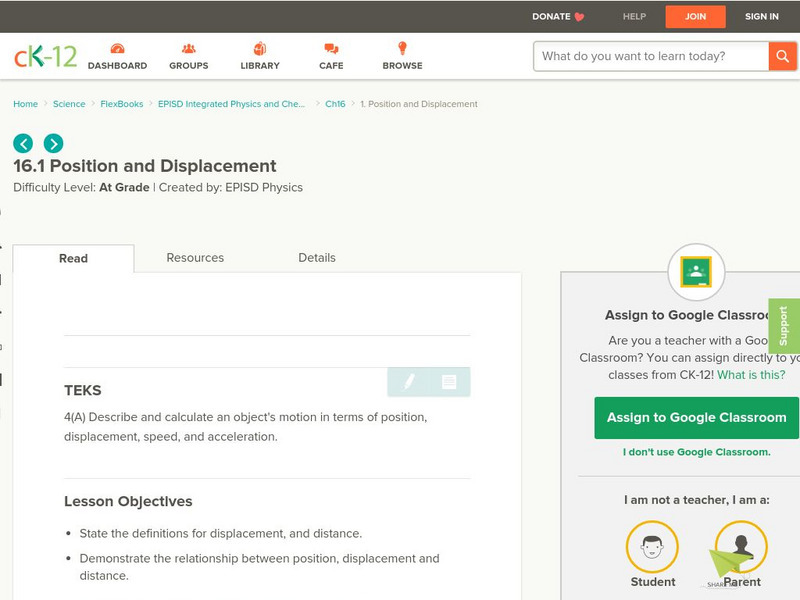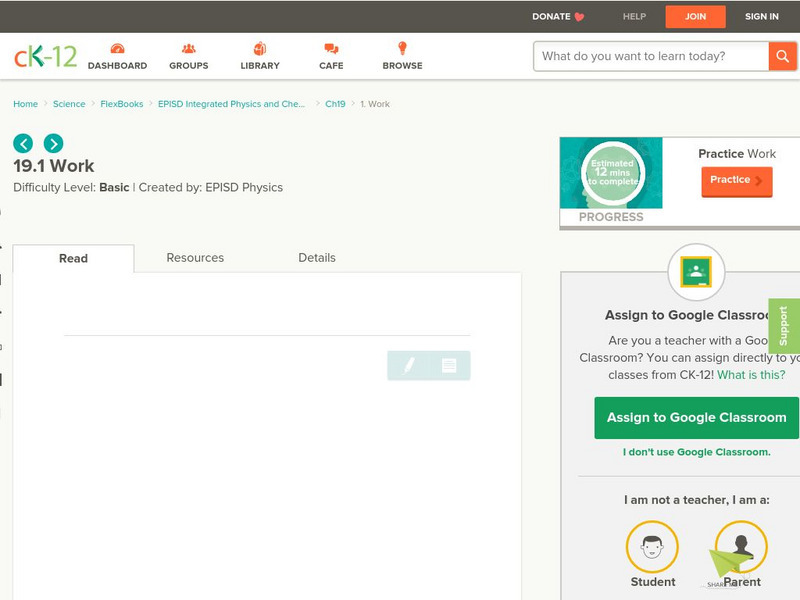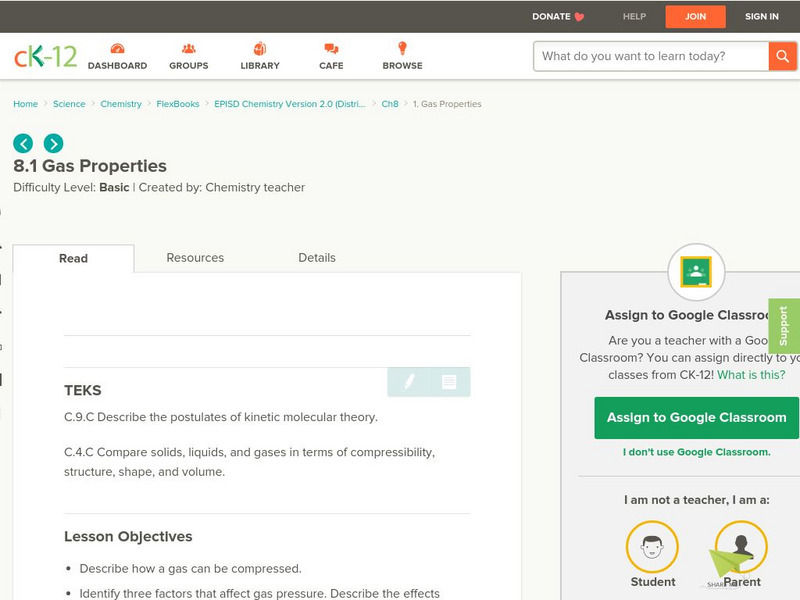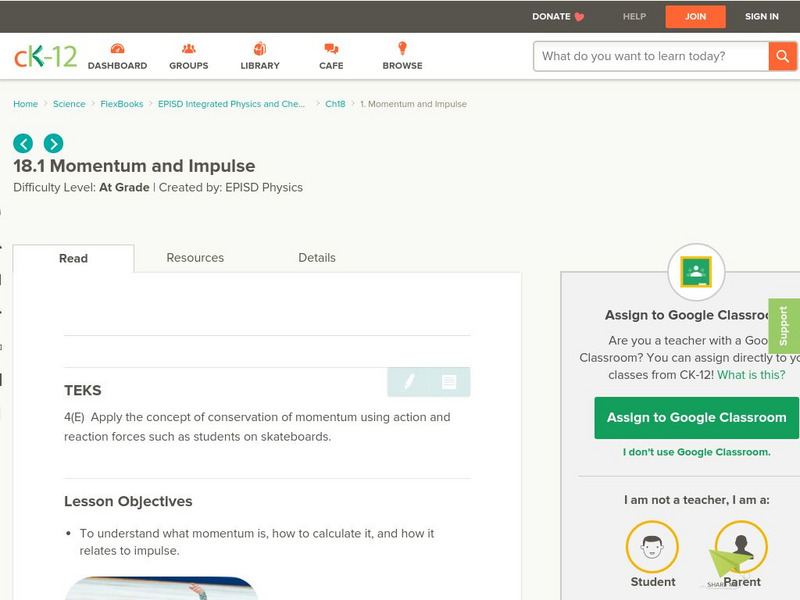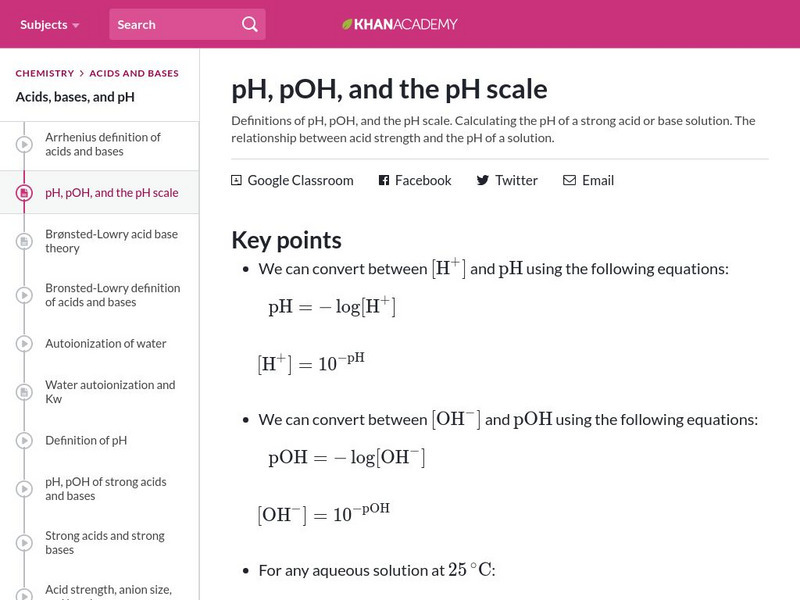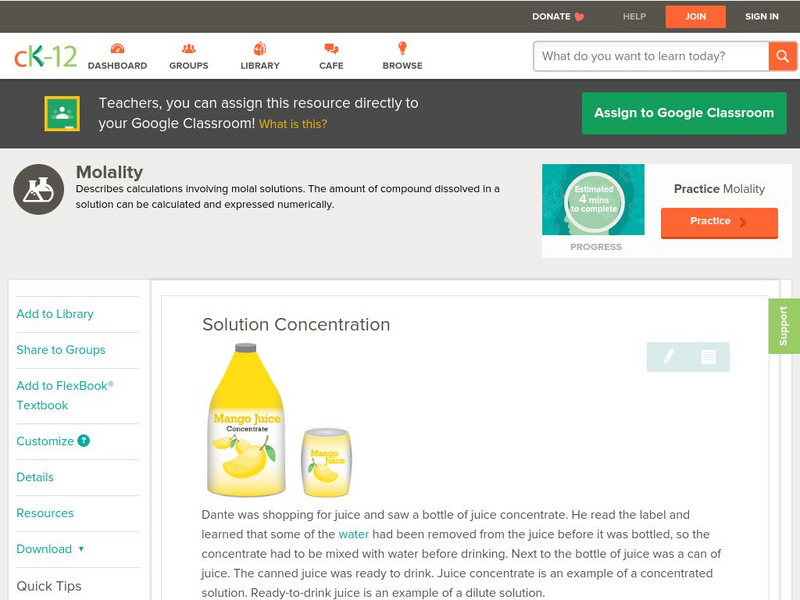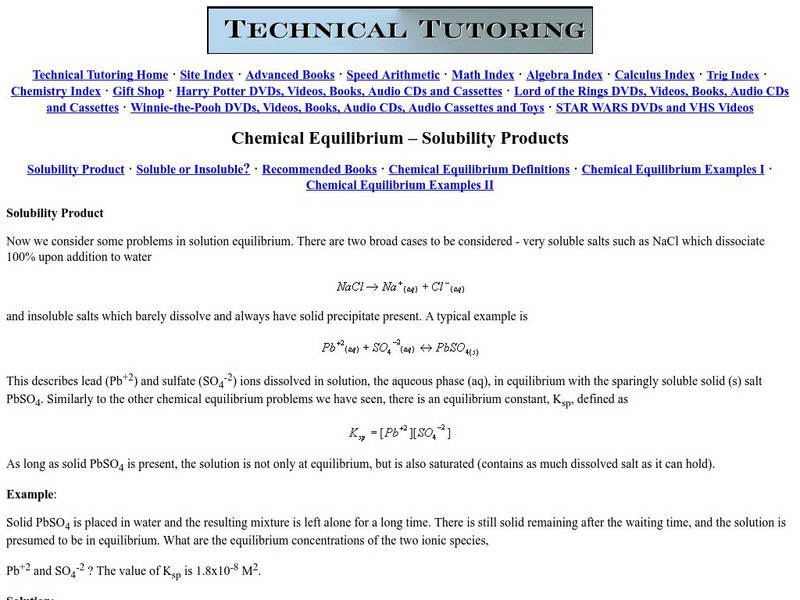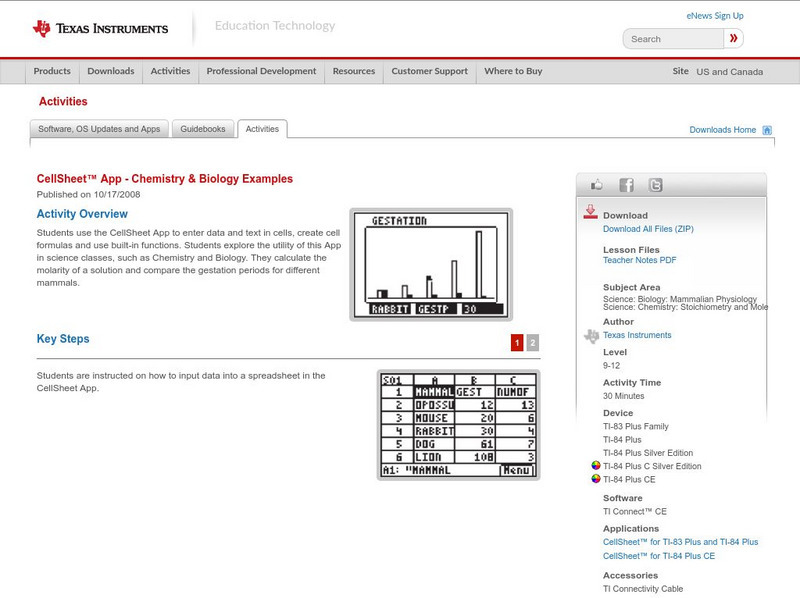CK-12 Foundation
Ck 12: Position and Displacement
[Free Registration/Login may be required to access all resource tools.] Students explore and calculate an object's motion in terms of position, displacement, speed, and acceleration.
CK-12 Foundation
Ck 12: Acceleration Due to Gravity
[Free Registration/Login may be required to access all resource tools.] In this module, students will explore the concept of gravity, and be able to use it to perform calculations using constant acceleration.
CK-12 Foundation
Ck 12: Mass Versus Weight
[Free Registration/Login may be required to access all resource tools.] Students explore the concept of weight and how it differs from mass, and then they have the opportunity to calculate the weight of an object from its mass.
CK-12 Foundation
Ck 12: Work
[Free Registration/Login may be required to access all resource tools.] In this module, calculate work and explain how it relates to the overarching idea of energy.
Khan Academy
Khan Academy: The Equilibrium Constant K
Reversible reactions, equilibrium, and the equilibrium constant K. Learn how to calculate K, and how to use K to determine if a reaction strongly favors products or reactants at equilibrium.
Khan Academy
Khan Academy: Weak Acid Base Equilibria
Learn about weak acid and base ionization reactions and the related equilibrium constants, Ka and Kb. Relate Ka and Kb to pH, and calculate percent dissociation.
CK-12 Foundation
Ck 12: Cell Potentials
[Free Registration/Login may be required to access all resource tools.] Students will discover how an electrical potential is generated in an electrochemical cell, and then they will calculate the standard cell potentials from a table of...
CK-12 Foundation
Ck 12: Uniform Acceleration
[Free Registration/Login may be required to access all resource tools.] Students examine the difference between uniform acceleration and average acceleration, and preform calculations using uniform acceleration.
CK-12 Foundation
Ck 12: Instantaneous Velocity
[Free Registration/Login may be required to access all resource tools.] Students explore instantaneous velocity and how to calculate it. They also learn how interpret and create position vs time graphs.
CK-12 Foundation
Ck 12: Rate Laws
[Free Registration/Login may be required to access all resource tools.] Students use a rate law to describe the concentration dependence of a reaction rate, and then determine the rate law for a reaction by analysis of experimental data....
CK-12 Foundation
Ck 12: Gas Properties
[Free Registration/Login may be required to access all resource tools.] The following online tutorial describes how a gas can be compressed and identifies three factors that affect gas pressure. Students will describe the effects...
CK-12 Foundation
Ck 12: Friction
[Free Registration/Login may be required to access all resource tools.] In this module, students learn what causes friction, what factors affect friction, and how it is calculated.
CK-12 Foundation
Ck 12: Momentum and Impulse
[Free Registration/Login may be required to access all resource tools.] Students investigate what momentum is, how to calculate it, and how it relates to impulse.
CK-12 Foundation
Ck 12: Unit Conversions, Error, and Uncertainty
[Free Registration/Login may be required to access all resource tools.] Students explore a science investigation learning module including conversions, error, and uncertainty in scientific measurement.
Crescent Public Schools
The Internet Science Room: P H and the P H Scale
A chemistry tutorial which explains pH and the pH scale. There are also opportunities for students to do some calculation practice.
Khan Academy
Khan Academy: P H, P Oh, and the P H Scale
Definitions of pH, pOH, and the pH scale. Practice calculating the pH of a strong acid or base solution. Learn the relationship between acid strength and the pH of a solution.
CK-12 Foundation
Ck 12: Physical Science: Density
[Free Registration/Login may be required to access all resource tools.] Definition of density and how to calculate density.
CK-12 Foundation
Ck 12: Physical Science: Solution Concentration
[Free Registration/Login may be required to access all resource tools.] Definition of concentration of a solution, the difference between concentrated and dilute solutions and how to calculate the concentration of a solution.
Khan Academy
Khan Academy: Stoichiometry
How to use mole ratios from a balanced reaction to calculate amounts of reactants.
Khan Academy
Khan Academy: Limiting Reagents and Percent Yield
How to determine the limiting reagent, and using stoichiometry to calculate the theoretical and percent yield.
Chiral Publishing
Chiral Publishing: An Introduction to Chemistry: Chemical Calculations and Chemical Equations [Pdf]
Slide show focusing on the elements of stoichiometry relating to limiting reactants. Go through the first several slides to review or introduce the topic.
Carnegie Mellon University
Chem Collective: Dna Binding Dyes Scenario
This activity explores the equilibrium of dyes that self-assemble into DNA templates. Students use knowledge of equilibrium and quantitative spectroscopy to explore different dyes that bind selectively to DNA molecules. In this activity,...
Other
Chemical Equilibrium: Solubility Products
This site provides information on how to calculate the solubility products of different elements.
Texas Instruments
Texas Instruments: Cell Sheet App
Students use the CellSheet App to enter data and text in cells, create cell formulas and use built-in functions. Student explore the utility of this App in science classes, such as Chemistry and Biology. They calculate the molarity of a...
